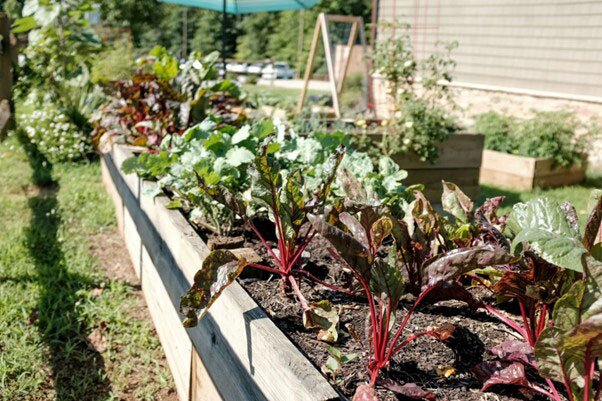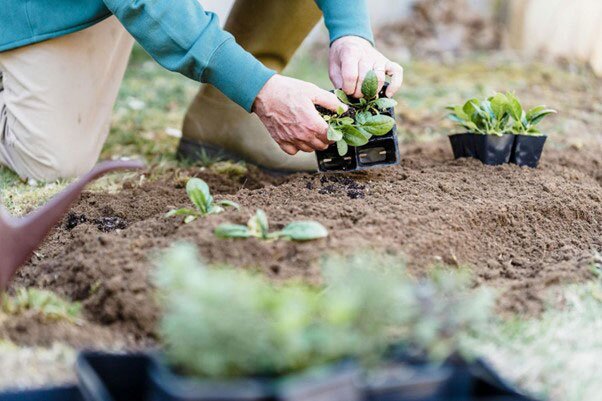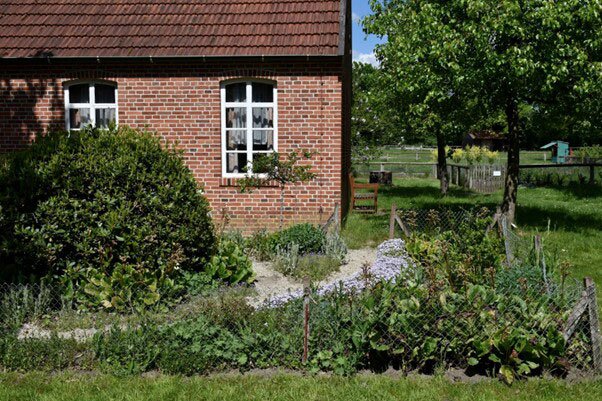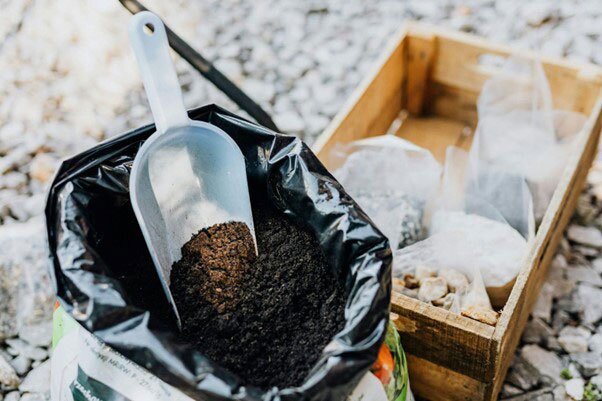Thinking about growing your own vegetables? Nothing beats the satisfaction of harvesting your own fresh produce. It’s cost-effective, better for the planet, and it's easier than you think too. Even a small garden can yield a surprising amount of fresh veg.

To help you get started, this essential guide includes all of our top tips on how to grow vegetables at home. We’ll cover everything from picking the right location to protecting your plants from pests, so you can have fresh, tasty produce right from your own back garden.
Picking the right spot for your vegetable patch
The location of your patch is one of the most important considerations when growing your own vegetables, as the right conditions can have a big impact on the health of your harvest. Look for a sunny spot that gets at least six hours of sunlight a day, has well draining soil, and is protected from strong winds. If you don't have a sunny patch for your garden, you can still grow vegetables in the shade, but you'll need to pick shade-tolerant vegetables like lettuce, spinach, and other leafy greens.

Adverse weather can have a significant effect on your vegetables. If your chosen spot is exposed, installing a windbreak mesh can protect your plants from wind, as well as providing shade in bright sun.
Choosing the right vegetables for your garden
Before you start sowing, it’s worth thinking about what you actually want to grow and what suits your skill level. If you're new to gardening, start with crops that are low-maintenance and fast-growing, such as salad leaves, courgettes, carrots, runner beans, and beetroot.

Consider the season too, as many plants grow best when started at just the right time. The chart below shows when to start planting your crops so they can grow when conditions are right.
Spring
Summer
Autumn
Winter
March-May:
Carrots, beetroot, tomatoes lettuce, spinach, peas, radishes, spring onions, early potatoes, onions, cabbage seedlings, kale, broccoli, aubergines, strawberries (new plants).
Of course, you'll also want to grow what you love to eat, so you can make the most of your harvest. For example, if you cook a lot of Mediterranean food, go for tomatoes, basil, and aubergines. If hearty soups and stews are more your thing, consider growing onions, leeks, and kale.
If you have a small garden or balcony, or if you want to grow your own vegetables indoors, you might wish to plant your vegetables in containers or pots. In this case, consider growing more compact veggies. Radishes, salad leaves, and vertical climbers like tomatoes and peas are some of the best vegetables to grow in pots, along with dwarf varieties of your favourite produce. You can use mesh panels or a trellis to guide and support climbing plants as they grow.
Building and planting your vegetable patch
Once you've mapped out your area, it's time to prepare it. Good soil is key to healthy plants, so dig down around 30cm to loosen the ground and remove grass, weeds, and stones from the area. If your soil is particularly dense or clay-like, you can improve drainage by adding compost, sand, or gravel.

With your soil prepared, it's time to start planting. No matter if you're planting seeds or young plants, the packet or label will include instructions for depth, spacing, and timing. Be sure to follow these guidelines closely, as proper spacing and timing can make all the difference to how well your vegetables grow.
Once everything is in the ground, label your rows or containers so you can keep track of what’s growing where. This will come in handy when it’s time to water, feed, or harvest. Finally, finish off with a layer of mulch, such as bark chippings, to lock in moisture, reduce weeds, and keep the soil temperature steady.
Protecting your garden from pests
Keeping pests at bay is a key part of growing your own vegetables — you don't want all your hard work to be eaten by someone else! Common garden invaders like birds, insects, and wild animals can quickly undo all your hard work, so early prevention (rather than removal) is crucial. Installing physical barriers such as garden mesh fencing is often the most effective, humane, and low-maintenance solution.

Rabbit wire or a 25mm lightweight welded mesh can help to protect your vegetable patch against larger pests such as rabbits, and stronger welded mesh can act as a deterrent to foxes and cats, especially if the wire is dug slightly into the ground to prevent animals from digging underneath. For more specific advice for keeping out certain pests, take a look at our guides to deterring cats, foxes, squirrels, and rats.
Small pests, like slugs, aphids, and caterpillars, as well as birds, can be more difficult to keep at bay, but it's not impossible. One of the most effective solutions is using fine wire mesh, such as a 13mm lightweight mesh for wild birds or insect mesh, which allows light and water through while keeping the pests at bay. You may also wish to consider building a fruit cage using 13mm x 13mm hole mesh.These offer full coverage with mesh sides and roofs to keep birds out.
For smaller pests like aphids or beetles, natural methods can go a long way. Companion planting is a great trick. Certain plants naturally deter pests or attract beneficial insects that feed on the ones you don’t want. For example, marigolds are known to repel aphids and whitefly. For more information and tips, take a look at this handy companion planting guide from BBC Gardeners' World. You can also use natural sprays, like diluted soap or garlic spray, to keep bugs at bay without harming your plants.
Lastly, encouraging helpful wildlife is another low-effort, high-reward approach. Ladybirds, hoverflies, and even frogs are brilliant at keeping pest numbers down. Planting pollen-rich flowers or creating a little wildlife-friendly corner in your garden can make a big difference.
Growing your own vegetables doesn't just stop at planting. Once your crops are in the ground, they’ll need ongoing care to stay productive throughout the season. Most vegetables prefer consistent moisture, so remember to water regularly, especially during warm, dry spells. Try to water early in the morning or late in the evening to reduce evaporation. Adding mulch around your plants can also help the soil retain moisture and keep weeds down.

Growing your own vegetables doesn't just stop at planting. Once your crops are in the ground, they’ll need ongoing care to stay productive throughout the season. Most vegetables prefer consistent moisture, so remember to water regularly, especially during warm, dry spells. Try to water early in the morning or late in the evening to reduce evaporation. Adding mulch around your plants can also help the soil retain moisture and keep weeds down.
Feeding your plants is just as important as watering. Fast-growing crops like tomatoes, courgettes, and leafy greens benefit from a regular feed with a high-potassium fertiliser once they start producing fruit or leaves. Adding compost and well-rotted manure are great natural ways to enrich your soil too.
Staking and support can help taller plants or vines like beans, peas, and tomatoes grow strong and upright, improving airflow and preventing rot. Bamboo canes or a homemade trellis made from 50mm hole welded wire mesh can keep things tidy. Finally, stay on top of weeds and pests, check for signs of disease, and harvest regularly to encourage new growth. In leafy crops, pinching off flowers helps redirect the plant’s energy to its leaves, making your vegetables grow faster and bigger.
Vegetable garden FAQs
When should I start planting?
›
Can I grow vegetables without a garden?
›
How do I know when to harvest?
›
Growing your own vegetables is a rewarding way to eat well, save money, and connect with nature. With the right setup and a bit of care, your garden can provide delicious, homegrown produce throughout the season — and the sense of achievement is unbeatable.
Good pest control measures are key to a great harvest, and mesh is one of the most humane and effective ways to keep out unwanted visitors like birds, rabbits, and insects. We have a wide range of wire mesh solutions to help keep your plants safe and healthy. If you're not sure what kind of mesh you need for your vegetable patch, feel free to get in touch for tailored advice.




